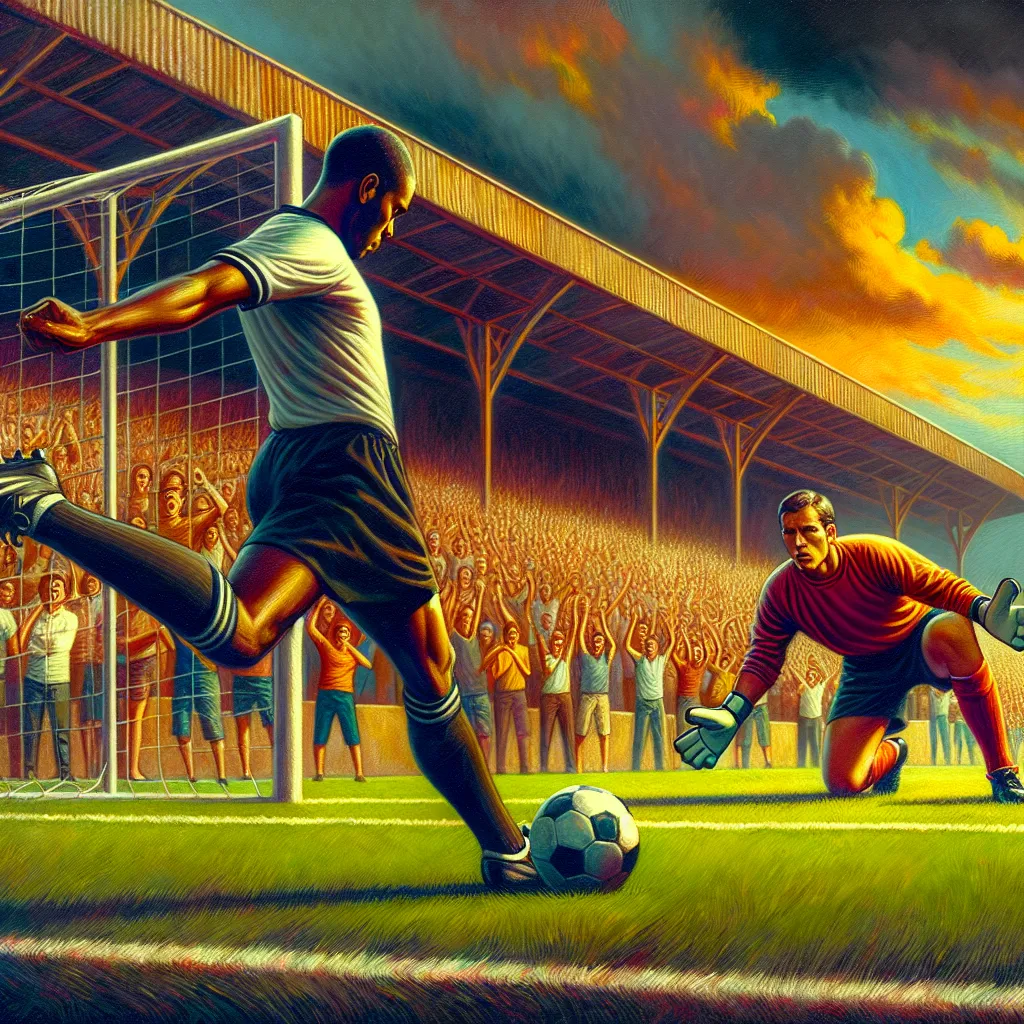
- Published on
- Authors

- Name
- Sports Tips
Penalty Kicks: Composure and Technique
When it comes to penalty kicks, the distance between hero and zero can be just 12 yards. The seemingly simple task of beating the goalkeeper masks a complex interplay of mental fortitude and technical precision. This article delves deep into the art and science of taking penalty kicks, providing insight from both player and coaching perspectives.
Composure: The Mental Battle
Understanding the Pressure
Taking a penalty kick is as much about mental toughness as it is about technical skill. The pressure can be immense—millions of eyes, the weight of expectation, and the knowledge that a single misstep can turn cheers into groans. Here are some key components:
- Focus: Clear your mind, visualize success.
- Breathing: Regulate your breathing to remain calm.
- Routine: Stick to a pre-penalty routine to create consistency and reduce anxiety.
Mind Games and Psychological Warfare
Experienced penalty takers and goalkeepers often engage in mind games. Here’s a breakdown of some psychological tactics you might encounter both as a player and a coach:
| Tactic | Description |
|---|---|
| Staring Contest | Players and goalkeepers often lock eyes in an attempt to intimidate or unsettle each other. |
| Fake Gestures | Keepers might pretend to dive one way or signal that they "know" where you'll shoot. |
| Delay Tactics | Keepers might delay the kick, forcing the kicker to wait longer, increasing anxiety. |
| Trash Talk | Off-hand comments or muttered distractions to rattle the opponent (less common at higher professional levels). |
Technique: The Physical Execution
The Run-Up: Setting the Stage
The run-up isn't just about covering ground—it's also about setting the tone for your strike. Here are some considerations:
- Angle: Approach from an angle that allows you to strike the ball cleanly with your dominant foot.
- Speed: A balanced pace helps in maintaining composure and ensuring accuracy.
- Consistency: A consistent run-up helps in building muscle memory.
Striking the Ball: Precision Over Power
When striking the ball, control and precision often outweigh sheer power. Here are key pointers:
- Placement: Aim for the corners. Shots toward the top corners are the hardest for keepers to reach.
- Body Positioning: Lean slightly over the ball to keep your shot low. Leaning back can cause the ball to skyrocket over the bar.
- Follow-Through: Ensure your foot follows through towards the target area to guide the ball.
Should You Go for Power or Placement?
This table might help you decide depending on your strengths and the situation:
| Situation | Recommendation |
|---|---|
| Facing an Elite Goalkeeper | Opt for placement over power; elite keepers are adept at saving powerful shots that lack precision. |
| In a High-School/Amateur Setting | Power can often overcome less experienced goalkeepers easily. |
| If Nervous or Uncertain | Placement, aim low and to the corner - a safe bet. |
Analyzing the Goalkeeper
- Pre-Kick Observations: Spend a few seconds analyzing the keeper’s stance and movements. Are they leaning one way? Do they appear nervous or overly confident?
- Historical Tendencies: If possible, study historical footage of the keeper. Some may have tendencies to dive a certain way under pressure.
- In-Game Cues: During the match, take note if the keeper has a tendency to go early or stay centered.
Tips from Legends
Here are some insights from football legends to help you master your penalty kicks:
- Cristiano Ronaldo: Renowned for his penalty-taking prowess, Ronaldo stresses the importance of mental strength and detailed preparation.
- Lionel Messi: Messi often takes a stutter-step or short pause in his run-up, reading the keeper’s movements before slotting the ball home.
- Andrea Pirlo: Known for his "Panenka" style penalty, Pirlo emphasizes the element of surprise and calmness under pressure.
Practice Drills
Isolation Practice
- Setup: One player, one ball, one goal. Simulate match conditions as closely as possible.
- Objective: Focus solely on executing the perfect penalty.
Pressure Training
- Setup: Incorporate pressure by having teammates or coaches create distractions.
- Objective: Build mental resilience under match-like conditions.
Keeper Analysis Sessions
- Activity: Review game footage of various goalkeepers.
- Objective: Learn to read keeper movements and tendencies effectively.
Conclusion
Mastering the penalty kick is a blend of mental fortitude and technical precision. Consistent practice, psychological preparation, and detailed analysis of opposition goalkeepers can elevate your proficiency, transforming you from a decent penalty taker to a dead-ball specialist. Whether you're a player looking to improve your technique or a coach striving to instill confidence in your squad, remember: Penalty kicks are as much about the mind as they are about the feet. Stay composed, stay focused, and strike with intent.
